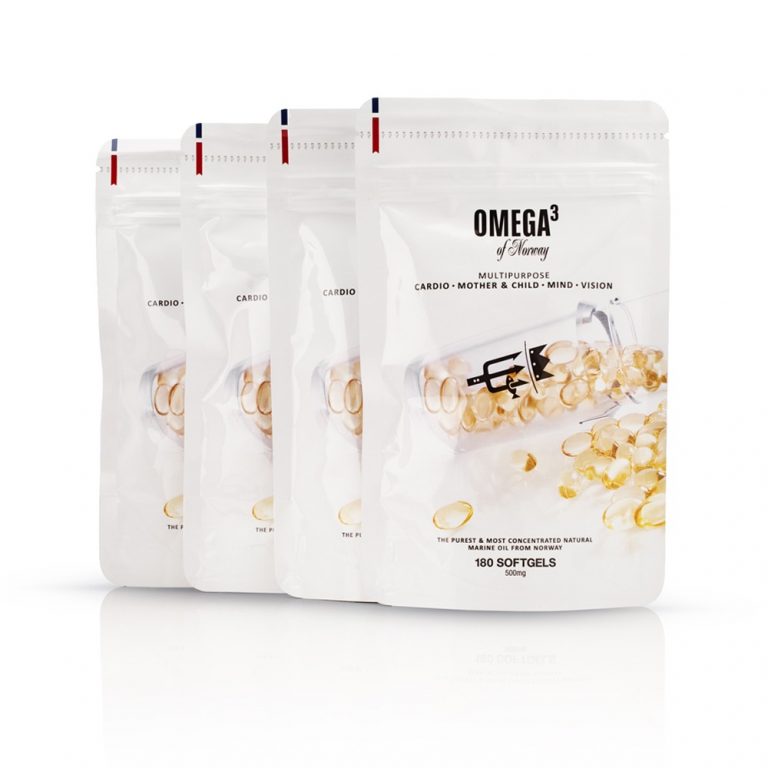What are omega – 3 fatty acids even good for? They are only for people with heart disease and make you gain weight anyways, right?
These are just some of the false assumptions many people have about omega – 3 fatty acids. It can be difficult to filter out the nonsense on the internet so we have compiled a myth-buster article for you to clear things up once and for all!
If you have any more questions let us know in the comments.
Myth 1: All Omega – 3 Fatty Acids Are Equal
There are different types of omega – 3 fatty acids and while they have many similarities, they cannot be used interchangeably. The most important ones for humans are docosahexaenoic acid (DHA), eicosapentaenoic acid (EPA) and alpha-linolenic acic (ALA). Let’s go through those acronyms and make it all a bit easier to understand.
ALA is considered to be the “original” omega – 3 because the other two, EPA and DHA, can be synthesized from it in our bodies. ALA however, cannot be produced by our metabolism and we therefore have to consume it through our food. This makes it and all other omega – 3 fatty acids so-called “essential” fatty acids. ALA is found in plant-based foods like flaxseeds and walnuts for example. And while it can be split up into the other two forms, this process is very inefficient and therefore it is recommended to consume EPA and DHA through food directly. These two are found in marine sources such as cold-water fish like salmon or mackerel. But it is not that easy to get enough of those fatty acids through food alone, but more on that later. However, it is also possible to take omega – 3 supplements which contain EPA and DHA in higher concentrations.
The effects that these fats have are also not identical. While ALA is mostly used for energy in our body, EPA plays an important role in combatting inflammation and can even help stabilise our mood. DHA on the other hand, is an essential structural component of our cell membranes and central nervous system and important for the development and functioning of our brain.
As you can see, while they all share some characteristics like their molecular structure, the effects and origins of those three main omega – 3 fatty acids are not identical and it is important that we consume sufficient amounts of all three of them.
Myth 2: They Make You Fat (Because They Are Fat)
Fats are bad right? Well, it is not as easy as that!
First of all, “fat” describes a whole group of substances that come in different molecular configurations which greatly influence their impact and how healthy or not they are for us. Some of them, like trans fats, can cause more damage to our body than others, like omega – 3 fatty acids for example. So much so, that we could actually not survive without omega – 3 fatty acids as they have a lot of important functions in our body. So while omega – 3 fatty acids are fats, this does not automatically mean that they are bad for us.
Secondly, we do not gain weight by eating fat. What makes us gain weight is consuming more calories than we are burning. And while fats do have a high density of calories, if you have an active lifestyle or a lot of muscle mass, you will also burn more calories so it does not automatically lead to weight gain if there is no excess in consumed calories.
Some research even suggests that omega – 3 consumption can help promote satiety and reduce appetite, therefore making you less likely to overeat and keep your calorie intake in check. This may be due to the fact that they increase serotonin levels, a hormone that can reduce cravings, makes your stomach feel full and can even improve your metabolism, making you burn more calories.
So the answer here is yes and no. Omega – 3 fatty acids are fats, but that does not necessarily mean that they make you gain weight.
Myth 3: You Can Get Enough Omega – 3 From Food Alone
In theory it is possible to hit your weekly dose of omega – 3 fatty acids through food alone. Since those fatty acids are “essential” our body cannot produce them itself but we need to get them from external sources.
The reality however, is that 95% of Americans do not get enough omega – 3 from their diet. Because it is not just as easy as eating fish twice a week. It depends on the kind of fish, what the fish itself was eating and other environmental factors. While almost all fish contain certain amounts of EPA and DHA, fatty fish have the highest amounts and are therefore useful in this aspect. They are mostly cold-water fish like salmon, mackerel or tuna. Other white and more lean fish like cod or shellfish however contain low amounts of EPA and DHA. If you want to read more about foods that contain abundant amounts of omega – 3, check out this blogpost. https://norwayomega.us/blog/which-products-provide-abundant-amounts-of-omega-3-fatty-acids
The nutrition of the fish also influences how much of those fatty acids it has in its tissues, and it also influences the amount of other environmental contaminants it contains. Especially large predatory fish like swordfish can contain substantial amounts of toxins such as mercury in their flesh, which should be taken into consideration when eating them, especially for pregnant women.
So how can we make sure we get enough omega – 3 fatty acids? Luckily there is an easy and convenient alternative to get high concentrations of those fatty acids. Fish oil or krill oil supplements contain both EPA and DHA and are easy to take on a daily basis, ensuring you that you are meeting your body’s requirements. But just as it is with fish, the food supplements also vary in quality, so when buying a supplement make sure to verify the concentration of each of the fatty acids and which form they take in the oil.
Myth 4: Omega – 3 Only Helps Your Heart
Most people think of omega – 3 fatty acids in relation to heart disease. And while it is true that they have a positive impact on our heart health such as reducing blood pressure, reducing the build-up of plaque that stiffens our artery walls, to influencing our blood lipid levels, there are many other positive aspects of consuming omega – 3.
It is therefore not just for people at risk of heart disease but can help prevent a range of issues for many people.
The fatty acid DHA for example, is one of the main building blocks of our brain and central nervous system and is especially important for fetal brain development. It also impacts the growth and development of the brain of small children and in older age, can contribute to reduce age-related cognitive decline. You can read more about the impact of omega -3 on fetal brain development on our blog. https://norwayomega.us/blog/omega-3-is-good-for-both-mother-and-child
Omega – 3 fatty acids are also important for the development of the retina and can help reduce dry eye symptoms. In the retina DHA are used for the continuous renewal of photoreceptors, which are the cells in the retina which respond to light. Other health benefits are protection of the skin against UV damage and maintaining healthy and stable skin cells.
They also have strong anti – inflammatory properties which can help reduce pain associated with diseases related to long-term low grade inflammations such as arthritis for example. They also help our immune system defend our body and can reduce the risk of certain diseases like diabetes that are driven by inflammation.
So as you can see, omega – 3 fatty acids can do much than helping your heart. While this is their main benefit, there is a lot more to be gained from them so most people will benefit from enriching their diet with omega – 3 fatty acids, which is easily done by consuming a high quality supplement.
Myth 5: Fish Oil Tastes Like Fish
Just like fresh seafood, fish oil or krill oil should not smell or taste fishy. If it does, it can be an indication that it has started to go rancid or oxidize. The fatty acids that fish oil contains are biologically active, which means that they can enter into chemical reactions with molecules that surround them, such as oxygen for example. To make them more stable they need additives like Vitamin E or other antioxidants to stop them from oxidising. One alternative for example is krill oil, which naturally contains the antioxidant astaxanthin which could contribute to make them more stable and naturally prolong their shelf life. But whenever you buy an omega – 3 supplement, make sure it does not smell fishy as this might be an indicator that the oil is not as fresh anymore.
Here at Omega 3 of Norway we use high quality gelatine capsules produced by industry leader Swiss Caps that ensure a pleasant consumer experience and have a neutral taste and odour profile. They are small and easy to swallow and therefore make it easy to stick to the daily habit of taking the capsules, too.
Conclusion
So here they are, the answers to some of the top myths surrounding omega – 3 fatty acids and fish oil supplements. If you have any further questions, please leave us a comment or browse our blog for more information about our products.
Sources
https://www.abbeyskitchen.com/omega-3s-top-myths/
https://www.meg-3.com/en_US/news/debunking-the-top-4-myths-about-omega-3-fats.html
https://www.truebasics.com/blog/common-myths-about-fish-oil-busted/
https://omegaquant.com/11-myths-about-omega-3-fish-oil-supplements/























